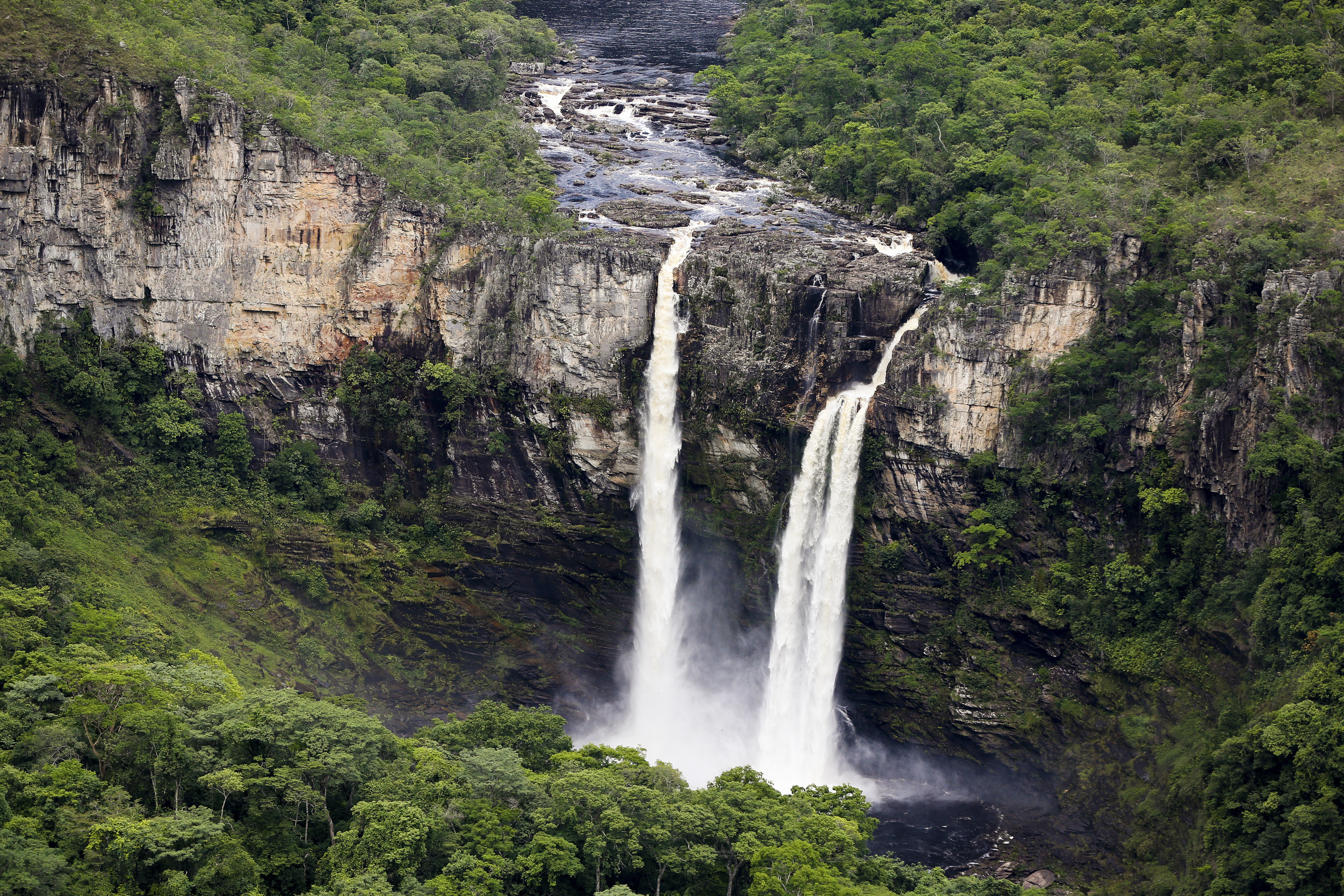|
Plush-crested Jay
The plush-crested jay (''Cyanocorax chrysops'') is a jay of the family Corvidae (which includes the crows and their many allies). It is found in central-southern South America: in southwestern Brazil, Bolivia, Paraguay, Uruguay, and northeastern Argentina, including southern regions of the Amazon Basin river systems bordering the Pantanal. Description The plush-crested jay is a medium-sized bird with an overall dark blue colored plumage. It has a cream-yellow underbelly, undertail coverts, underwings, and tail tip, while the upper breast, neck, and head are mostly black. It has a lighter blue on its cheeks and nape, which fades into the darker blue of its body, as well as a spot above its eyes, which are yellow. Its bill is dark blue to black. It has a rounded crest on its head, which it is named for. Distribution The range of the plush-crested jay extends from the Southern Region, Brazil with Uruguay and approaches the Atlantic Ocean, South Atlantic coast, but avoids the coas ... [...More Info...] [...Related Items...] OR: [Wikipedia] [Google] [Baidu] |
Foz Do Iguaçu
Foz do Iguaçu (; "Iguazu River mouth"), colloquially referred to as Foz, is the Brazilian city on the border of Iguaçu Falls. Foz in Portuguese language, Portuguese means the mouth or end of a river and Iguaçu in Guarani language, Guarani or Tupi language, Tupi comes from the words "''y''" , meaning "water" or "river", and "''guasu''" , meaning "big". The city is the 7th largest in the state of Paraná (state), Paraná with a population of approximately 258,000 inhabitants. It is approximately 650 km (400 mi) west of the capital of the state, Curitiba, being the westernmost city in that State. The inhabitants of the city are known as ''iguaçuenses''. The Iguaçu Falls located on the border of Argentina and Brazil and consisting of approximately 257 individual waterfalls over were chosen as one of the "''New Seven Wonders of Nature, New Natural Seven Wonders of the World''." The city is characterized by tourism and cultural diversity. There are about 80 Nationality, ... [...More Info...] [...Related Items...] OR: [Wikipedia] [Google] [Baidu] |
Cerrado
The Cerrado () is a vast ecoregion of Tropics, tropical savanna in central Brazil, being present in the states of Goiás, Mato Grosso do Sul, Mato Grosso, Tocantins, Maranhão, Piauí, Bahia, Minas Gerais, São Paulo (state), São Paulo, Paraná (state), Paraná and the Federal District (Brazil), Federal District. The core areas of the Cerrado biome are the Brazilian highlands – the ''Planalto''. The main habitat types of the Cerrado consist of forest savanna, wooded savanna, park savanna and grass, gramineous-woody savanna. The Cerrado also includes savanna wetlands and gallery forests. The second largest of Biomes in Brazil, Brazil's major habitat types, after the Amazon rainforest, Amazonian rainforest, the Cerrado accounts for a full 21 percent of the country's land area (extending marginally into Paraguay and Bolivia). About 75% of the Cerrado’s 2 million km2 is privately owned. Vast amounts of research have shown that the Cerrado is one of the richest of all tropi ... [...More Info...] [...Related Items...] OR: [Wikipedia] [Google] [Baidu] |
Birds Of Uruguay
Birds are a group of warm-blooded vertebrates constituting the class Aves (), characterised by feathers, toothless beaked jaws, the laying of hard-shelled eggs, a high metabolic rate, a four-chambered heart, and a strong yet lightweight skeleton. Birds live worldwide and range in size from the bee hummingbird to the common ostrich. There are over 11,000 living species and they are split into 44 orders. More than half are passerine or "perching" birds. Birds have wings whose development varies according to species; the only known groups without wings are the extinct moa and elephant birds. Wings, which are modified forelimbs, gave birds the ability to fly, although further evolution has led to the loss of flight in some birds, including ratites, penguins, and diverse endemic island species. The digestive and respiratory systems of birds are also uniquely adapted for flight. Some bird species of aquatic environments, particularly seabirds and some waterbirds, have furth ... [...More Info...] [...Related Items...] OR: [Wikipedia] [Google] [Baidu] |
Birds Of Bolivia
Birds are a group of warm-blooded vertebrates constituting the class Aves (), characterised by feathers, toothless beaked jaws, the laying of hard-shelled eggs, a high metabolic rate, a four-chambered heart, and a strong yet lightweight skeleton. Birds live worldwide and range in size from the bee hummingbird to the common ostrich. There are over 11,000 living species and they are split into 44 orders. More than half are passerine or "perching" birds. Birds have wings whose development varies according to species; the only known groups without wings are the extinct moa and elephant birds. Wings, which are modified forelimbs, gave birds the ability to fly, although further evolution has led to the loss of flight in some birds, including ratites, penguins, and diverse endemic island species. The digestive and respiratory systems of birds are also uniquely adapted for flight. Some bird species of aquatic environments, particularly seabirds and some waterbir ... [...More Info...] [...Related Items...] OR: [Wikipedia] [Google] [Baidu] |
Birds Of The Amazon Rainforest
Birds are a group of warm-blooded vertebrates constituting the class Aves (), characterised by feathers, toothless beaked jaws, the laying of hard-shelled eggs, a high metabolic rate, a four-chambered heart, and a strong yet lightweight skeleton. Birds live worldwide and range in size from the bee hummingbird to the common ostrich. There are over 11,000 living species and they are split into 44 orders. More than half are passerine or "perching" birds. Birds have wings whose development varies according to species; the only known groups without wings are the extinct moa and elephant birds. Wings, which are modified forelimbs, gave birds the ability to fly, although further evolution has led to the loss of flight in some birds, including ratites, penguins, and diverse endemic island species. The digestive and respiratory systems of birds are also uniquely adapted for flight. Some bird species of aquatic environments, particularly seabirds and some waterbird ... [...More Info...] [...Related Items...] OR: [Wikipedia] [Google] [Baidu] |
Birds Of Brazil
Brazil has one of the richest bird diversities in the world. The avifauna of Brazil include a total of 1862 confirmed species of which 239 are endemic. Five have been introduced by humans, 93 are rare or vagrants, and seven are known or thought to be extinct or extirpated. An additional 14 species are hypothetical (see below). Brazil hosts about 60% of the bird species recorded for all of South America. These numbers are still increasing almost every year, due to new occurrences, new species being described, or splits of existing species. About 10% of the bird species found in Brazil are, nonetheless, threatened. In June 2013 a simultaneous discovery of fifteen bird species in Brazil was announced, the first such since 1871, when August von Pelzeln described forty new species. The birds were from the families Corvidae, Thamnophilidae, Dendrocolaptidae, Tyrannidae, and Polioptilidae. Eleven of the new species are endemics of Brazil and four also inhabit Peru and Bolivia. Exce ... [...More Info...] [...Related Items...] OR: [Wikipedia] [Google] [Baidu] |
Birds Of Argentina
Birds are a group of warm-blooded vertebrates constituting the class Aves (), characterised by feathers, toothless beaked jaws, the laying of hard-shelled eggs, a high metabolic rate, a four-chambered heart, and a strong yet lightweight skeleton. Birds live worldwide and range in size from the bee hummingbird to the common ostrich. There are over 11,000 living species and they are split into 44 orders. More than half are passerine or "perching" birds. Birds have wings whose development varies according to species; the only known groups without wings are the extinct moa and elephant birds. Wings, which are modified forelimbs, gave birds the ability to fly, although further evolution has led to the loss of flight in some birds, including ratites, penguins, and diverse endemic island species. The digestive and respiratory systems of birds are also uniquely adapted for flight. Some bird species of aquatic environments, particularly seabirds and some waterbirds, have furt ... [...More Info...] [...Related Items...] OR: [Wikipedia] [Google] [Baidu] |
Cyanocorax
__NOTOC__ ''Cyanocorax'' is a genus of New World jays, passerine birds in the family Corvidae. It contains several closely related species that primarily are found in wooded habitats, chiefly in lowland tropical rainforest but in some cases also in seasonally dry forest, grassland and montane forest. They occur from Mexico through Central into southern South America, with the green jay and brown jay just entering the United States in southernmost Texas, ad the Azure and Plush-crested jays occurring southwards to the lower Paraná River basin. This genus is considered especially close to ''Cyanolyca'', an upland radiation occurring throughout the American Cordillera from Mexico to Peru and Bolivia, who look very similar to the blue-and-black species of ''Cyanocorax'' except for being a bit smaller. The North American blue jay genera ''Aphelocoma, Cyanocitta'' and '' Gymnorhinus'' seem to be slightly less closely related. ''Cyanocorax'' jays are generally black-and-blue, often ... [...More Info...] [...Related Items...] OR: [Wikipedia] [Google] [Baidu] |
Disjunct Distribution
In biology, a taxon with a disjunct distribution is one that has two or more groups that are related but considerably separated from each other geographically. The causes are varied and might demonstrate either the expansion or contraction of a species' range. Range fragmentation Also called range fragmentation, disjunct distributions may be caused by changes in the environment, such as mountain building and continental drift or rising sea levels; it may also be due to an organism expanding its range into new areas, by such means as rafting, or other animals transporting an organism to a new location (plant seeds consumed by birds and animals can be moved to new locations during bird or animal migrations, and those seeds can be deposited in new locations in fecal matter). Other conditions that can produce disjunct distributions include: flooding, or changes in wind, stream, and current flows, plus others such as anthropogenic introduction of alien introduced species either accid ... [...More Info...] [...Related Items...] OR: [Wikipedia] [Google] [Baidu] |
Xingu River
The Xingu River ( ; ; ) is a river in north Brazil. It is a southeast tributary of the Amazon River and one of the largest clearwater rivers in the Amazon basin, accounting for about 5% of its water. __TOC__ Description and history The first Indigenous Park in Brazil was created in the river basin by the Brazilian government in the early 1960s. This park marks the first indigenous territory recognized by the Brazilian government and it was the world's largest indigenous preserve on the date of its creation. Currently, fourteen tribes live within Xingu Indigenous Park, surviving on natural resources and extracting from the river most of what they need for food and water. The Brazilian government built the Belo Monte Dam on the Lower Xingu, which began operations in 2019 and is the world's fifth-largest hydroelectric dam. Construction of this dam was under legal challenge by environment and indigenous groups, who assert the dam would have negative environmental and social i ... [...More Info...] [...Related Items...] OR: [Wikipedia] [Google] [Baidu] |








